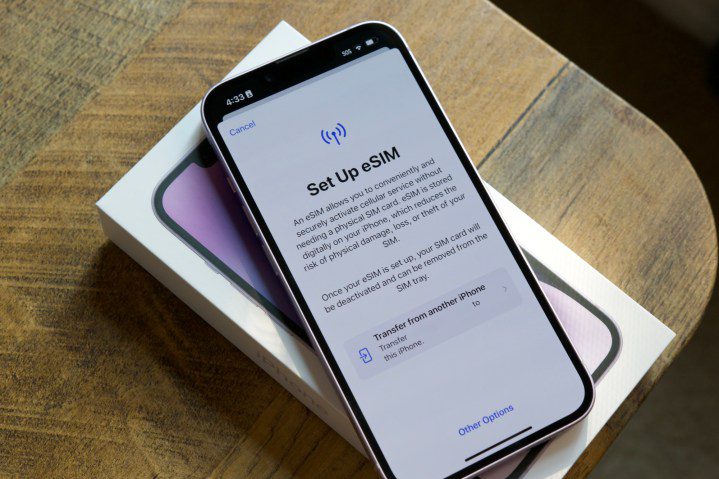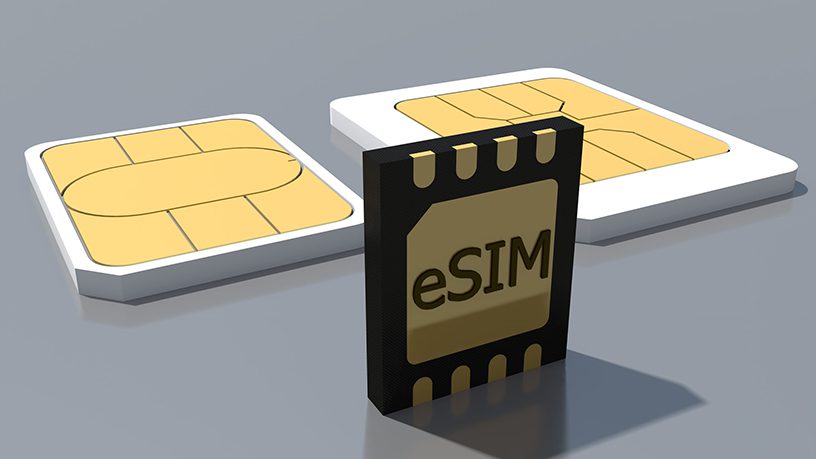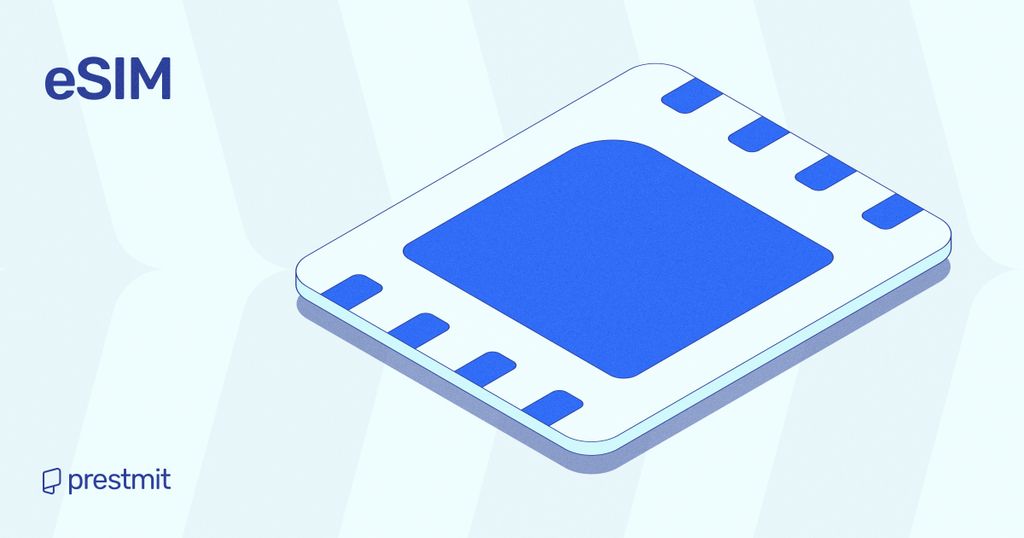Table of Contents
Did you know that there is a SIM that is integrated into mobile devices so that you don’t need to get a physical SIM again? That is called eSIM. Carrying a physical SIM around can be a hassle, considering its thumbnail size, which may get lost easily. However, as technology continues to evolve, smartphone manufacturing companies like Apple and Samsung now offer eSIM technology options. So, let’s dive deep into this innovation and how eSIM works.
What Is An eSIM?

An eSIM, also known as embedded SIM is a SIM card that is built into your smartphone and can not be removed. It works like the traditional SIM but is programmable and physically connected to your smartphone’s motherboard. This enables flexibility and ease of use.
The programmability feature of eSIM allows users to seamlessly switch across network operators without physically swapping cards. You can manage this entire process within the device’s electronic framework, improving user experience.
In most instances, eSIM is often used in a dual-SIM setup, where a physical SIM card serves as the primary option, and the eSIM works as the second choice. So this gives you the convenience of switching network operators at ease, irrespective of your location.
In this case, users can activate eSIMs on MTN, Glo, and other mobile networks in Nigeria and other countries. When you do that, you can access different MTN call tariff plans or the data plans as it is with using the physical card.
Devices That Support eSIM

There are Apple and Android phones that support eSIM. As of the time of writing this article, these are devices that support the embedded SIM technology:
- Apple: iPhone XS, iPhone XS Max, iPhone XR, iPhone 11, iPhone 11 Pro, iPhone 11 Pro Max, iPhone 12 mini, iPhone 12, iPhone 12 Pro, iPhone 12 Pro Max, iPhone 13 mini, iPhone 13, iPhone 13 Pro, iPhone 13 Pro Max, iPad Pro (11-inch 2nd generation), iPad Pro (12.9-inch 4th generation), iPad Air (4th generation), iPad (9th generation), iPad mini (6th generation), iPhone 14, iPhone 14 Max, iPhone 14 Pro, iPhone 14 Pro Max.
- Samsung: Galaxy S20, Galaxy S20+, Galaxy S20 Ultra, Galaxy S21, Galaxy S21+, Galaxy S21 Ultra, Galaxy S22, Galaxy S22+, Galaxy S22 Ultra, Galaxy Note 20, Galaxy Note 20 Ultra, Galaxy Z Fold, Galaxy Z Fold 2, Galaxy Z Fold 3, Galaxy Z Fold 4, Galaxy Z Flip, Galaxy Z Flip 3, Galaxy Z Flip 4, Galaxy A52 5G, Galaxy A53 5G, Galaxy A72 5G, Galaxy A73 5G, Galaxy S23, Galaxy S23+, Galaxy S23 Ultra.
- Google: Pixel 3, Pixel 3 XL, Pixel 3a, Pixel 3a XL, Pixel 4, Pixel 4 XL, Pixel 4a, Pixel 4a 5G, Pixel 5, Pixel 5a 5G, Pixel 6, Pixel 6 Pro, Pixel 6a, Pixel 7, Pixel 7 Pro.
- Motorola: Razr 2019, Razr 5G, Edge+ (2022), Edge 30 Pro.
- Huawei: P40, P40 Pro, P40 Pro+, Mate 40, Mate 40 Pro, Mate 40 Pro+, Mate X2, Mate Xs.
- Xiaomi: Mi 11, Mi 11 Pro, Mi 11 Ultra, Mi 12, Mi 12 Pro, Redmi Note 11 Pro 5G, Redmi Note 11 Pro+ 5G, Redmi Note 12 Pro 5G, Redmi Note 12 Pro+ 5G.
- Sony: Xperia 1 II, Xperia 1 III, Xperia 5 II, Xperia 5 III, Xperia 10 III, Xperia 10 III Lite, Xperia 1 IV, Xperia 5 IV, Xperia 10 IV.
- Nokia: XR20, G50 5G, X100 5G, X20 5G.
NOTE: Some of these devices may not have eSIM capability in some countries or regions. For instance, iPhone devices from Mainland China do not support eSIM. This means that country and network-specific restrictions may apply when trying to use the technology.
How An eSIM Works
You can easily install an eSIM profile (provided by operators/ carriers) on an eSIM-compatible device. You can use multiple operators and subscribe simultaneously to several data plans to suit your needs.
Here are the steps to use the technology on your device:
- Buy an eSIM plan from your network provider.
- You will get a QR code and additional information via email or the network’s site/app.
- Scan the QR code or enter the details to activate.
Advantages Of eSIM Technology
1. Efficient Network Change
eSIM can manage up to five virtual SIM cards at a time. This functionality enables a quick switch between networks, which can be helpful when your primary network encounters signal issues. As such, the technology ensures that you remain connected even in areas of weak signals.
2. Seamless Travel Connectivity
This new SIM technology gives you a great experience while traveling as you do not need to change physical SIMs because of your location. You can easily switch to a local network in your destination country with the eSIM.
The functionality helps to reduce costs compared to the roaming charges you may incur with physical SIM. It also reduces the risk of misplacing/losing your primary SIM card.
3. Scalability
eSIM allows you to handle many phone numbers on a single device – making the technology suitable for businesses to use. Therefore, it is invaluable for those seeking to assign different numbers for work and personal communication. This is an advancement in using mobile devices with double physical SIM cards.
Disadvantages Of eSIM Technology
1. Security Threat
While physical SIM cards store information on the card itself, eSIMs have user data collected on the network’s backend server. This can put the privacy of the user at risk as eSIMs will be susceptible to cyberattacks or breaches.
For example, a user can suffer crypto scams in the hands of hackers when they get access to the cloud storage. So, this calls for adequate security measures to prevent such incidents.
2. Data Transfer Complexity
It is always easy to move personal data like contacts from a physical SIM when you are upgrading to a new phone. But this may not be possible with an eSIM card as you need to retrieve data from the cloud if you want to access it.
Frequently Asked Questions (FAQs) About eSIM
Which Is Better Between eSIM And Physical SIM Card?
These two SIMs have their respective features and benefits. An eSIM eliminates the need for a physical card, enabling remote functionality and offering flexibility of use in all locations. But a physical SIM card enables device swapping and compatibility across a wide range of devices.
Why Should I Use An eSIM?
An eSIM enables a seamless switching between networks. So instead of changing physical SIMs everywhere you go, you only need to scan a QR code to get coverage from different mobile networks.
How Do I Use An eSIM When Traveling Internationally?
An eSIM is commonly used when traveling to other countries. This functionality helps you separate SIM for countries you visit to leverage the local pricing for calls, texts, and internet access. You tend to cut down huge costs you may incur from roaming services.
Conclusion
We can not overemphasize the rate at which technology is going to ensure convenience and flexibility, which is what eSIM offers its users. This feature is easy to use and you do not need to change physical SIMs all the time because you are traveling or have a bad signal.
However, it is imperative to know the advantages and disadvantages of this technology, as highlighted in this article to help you understand how best to use it.
Last updated on March 17, 2025

